- Region
- Águilas
- Alhama de Murcia
- Jumilla
- Lorca
- Los Alcázares
- Mazarrón
- San Javier
-
ALL AREAS & TOWNS
- AREAS
- SOUTH WEST
- MAR MENOR
- MURCIA CITY & CENTRAL
- NORTH & NORTH WEST
- TOWNS
- Abanilla
- Abarán
- Aguilas
- Alamillo
- Alcantarilla
- Aledo
- Alhama de Murcia
- Archena
- Balsicas
- Blanca
- Bolnuevo
- Bullas
- Cañadas del Romero
- Cabo de Palos
- Calasparra
- Camping Bolnuevo
- Campo De Ricote
- Camposol
- Canada De La Lena
- Caravaca de la Cruz
- Cartagena
- Cehegin
- Ceuti
- Cieza
- Condado de Alhama
- Corvera
- Costa Cálida
- Cuevas De Almanzora
- Cuevas de Reyllo
- El Carmoli
- El Mojon
- El Molino (Puerto Lumbreras)
- El Pareton / Cantareros
- El Raso
- El Valle Golf Resort
- Fortuna
- Fuente Alamo
- Hacienda del Alamo Golf Resort
- Hacienda Riquelme Golf Resort
- Isla Plana
- Islas Menores & Mar de Cristal
- Jumilla
- La Azohia
- La Charca
- La Manga Club
- La Manga del Mar Menor
- La Pinilla
- La Puebla
- La Torre
- La Torre Golf Resort
- La Unión
- Las Palas
- Las Ramblas
- Las Ramblas Golf
- Las Torres de Cotillas
- Leiva
- Librilla
- Lo Pagan
- Lo Santiago
- Lorca
- Lorquí
- Los Alcázares
- Los Balcones
- Los Belones
- Los Canovas
- Los Nietos
- Los Perez (Tallante)
- Los Urrutias
- Los Ventorrillos
- Mar De Cristal
- Mar Menor
- Mar Menor Golf Resort
- Mazarrón
- Mazarrón Country Club
- Molina de Segura
- Moratalla
- Mula
- Murcia City
- Murcia Property
- Pareton
- Peraleja Golf Resort
- Perin
- Pilar de la Horadada
- Pinar de Campoverde
- Pinoso
- Playa Honda
- Playa Honda / Playa Paraíso
- Pliego
- Portmán
- Pozo Estrecho
- Puerto de Mazarrón
- Puerto Lumbreras
- Puntas De Calnegre
- Region of Murcia
- Ricote
- Roda Golf Resort
- Roldan
- Roldan and Lo Ferro
- San Javier
- San Pedro del Pinatar
- Santiago de la Ribera
- Sierra Espuña
- Sucina
- Tallante
- Terrazas de la Torre Golf Resort
- Torre Pacheco
- Totana
- What's On Weekly Bulletin
- Yecla


- EDITIONS:
 Spanish News Today
Spanish News Today
 Alicante Today
Alicante Today
 Andalucia Today
Andalucia Today
The Visigoths in Begastri
The Visigoths and Byzantines in Begastri
To read the other parts of this history:
Introduction to Begastri, Click Begastri Cehegin
The Iberians in Begastri, Click Iberians in Begastri
The Romans in Begastri, Click Romans in Begastri
The Moors in Begastri, Click Moors in Begastri
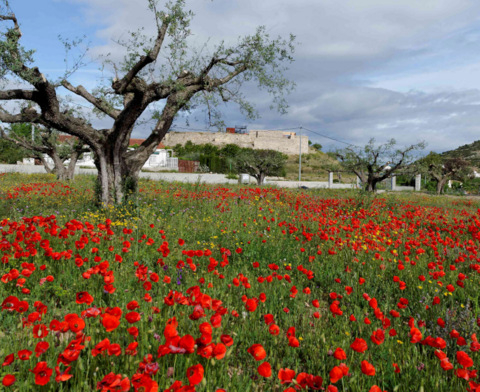 By the beginning of the third century Rome had expanded its empire to such a degree that it struggled to retain control of its vast holdings and entered a time of instability, an era which became known as the crisis of the third century, with 25 different emperors ruling between 235 and 284 AD.
By the beginning of the third century Rome had expanded its empire to such a degree that it struggled to retain control of its vast holdings and entered a time of instability, an era which became known as the crisis of the third century, with 25 different emperors ruling between 235 and 284 AD.
Between 284 and 305 the Emperor Diocletian regained control and broke the Empire into two, creating the Eastern ( commonly referred to today as the Byzantine Empire, although its inhabitants saw themselves as Roman citizens, calling themselves Romania, Basileia Romaion or Pragmata Romaion, meaning "Land of the Romans" or "Kingdom of the Romans" ) and Western Roman Empires, sub dividing the Spanish peninsula into five provinces during 293 AD; these were Gallaecia (capital city “Lucus”, or Lugo), Tarraconensis (capital city “Tarraco” or Tarragona), Lusitania (capital city “Emérita Augusta” or Mérida), Bética (capital city “Híspalis” or Sevilla) and Cartaginensis (capital city “Carthago Nova” or Cartagena).
Throughout the 3rd, 4th and into the 5th centuries, Germanic and Franco tribes began to cause problems for the Roman empire, and life became more dangerous for residents in Begastri as news reached the town that barbarian raiding parties were sweeping down through Europe, and the vandals across from Africa.
Gone were the days of safety, and the townspeople began to fortify the town for the dark days ahead. The important buildings within the town were dismantled and the stone used to construct defensive walls, surrounding the town with a thick impenetrable wall.
The Visigoths
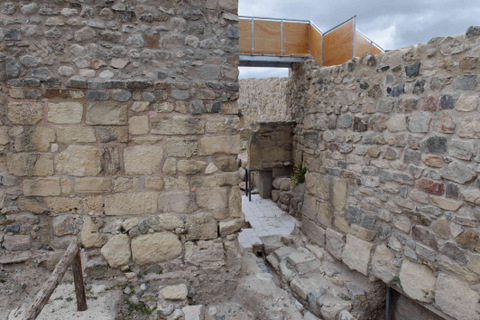 There is a general tendency to associate the Germanic tribes with fire and fighting, and the Spanish-Visigoth period as a dark age of continual economic and social crisis due to the constant power struggles between the nobles and tribes, or clans.
There is a general tendency to associate the Germanic tribes with fire and fighting, and the Spanish-Visigoth period as a dark age of continual economic and social crisis due to the constant power struggles between the nobles and tribes, or clans.
There is little physical evidence of the Visigoths in Murcia, Begastri being a site of great importance as much of what has been uncovered to date relates to the Visigoth era of occupation. Its a period of time which is quite difficult to grasp, unfamiliar names combining with the lack of what we can identify today in terms of a modern territory or kingdom, the Visigoths being a race which combined many influences and origins, and a nation which doesn´t survive in our modern world as a recognisable entity.
In the briefest fashion possible, the Goths were Germanic tribes, mentioned for the first time just before the end of the 3rd century. Initially a migratory population, the Visigoths were known by the Romans as the Wesi, or Wisi, a gothic word for good, the word visigoth a name invented to define the Wesi as "western goths" as opposed to the Ostrogoths, or eastern goths.
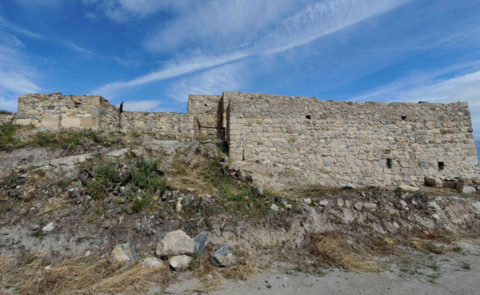 Initially, the Romans saw the goths as a fertile recruitment ground for their own armies, and used them to fight the tribes of Vandals, Alans and Suevi who had invaded Roman Spanish territories, giving them land on which to settle in France, but eventually the Goths took over Spain and established the Visigothic kingdom Hispania, with its capital at Toulouse.
Initially, the Romans saw the goths as a fertile recruitment ground for their own armies, and used them to fight the tribes of Vandals, Alans and Suevi who had invaded Roman Spanish territories, giving them land on which to settle in France, but eventually the Goths took over Spain and established the Visigothic kingdom Hispania, with its capital at Toulouse.
The history of Hispania (Spain) under the Visigoths can be divided into three periods: the first of which lasts from 418 to 476 AD. As Rome became weaker, Germanic tribes from northern Europe invaded Spain and the Balearic Isles in the early 5th century. The tribe of the Suebi settled in the province of Gallaecia, (see intro) while the Alani took over in Lusitania and Carthaginensis, and the Vandals in the Bética province. In 425 the Vandals made a military raid on the Carthaginensis province, pillaging the city of Carthago Nova, now Cartagena.
In response, the authorities in Rome put their Visigoth allies in charge of recovering military control over Hispania, in return for the promise of economic and territorial concessions. By the middle of the 5th century the Visigoths had taken control of the peninsula, having defeated the Vandals and the Alani, who fled to northern Africa in search of refuge and new lands. The Suebi in the north-east of the peninsula were the only ones who succeeded in holding out against the military onslaught of the Visigoths.
In the second period (476-507) the Visigoths founded a federal kingdom which was part of the Roman Empire. This enormous kingdom stretched all the way from the river Loire in Gaul to the Straits of Gibraltar, and was governed from its capital in Tolosa (Toulouse). When the Western Roman Empire finally fell, the Visigoth kingdom became independent in 476 AD. Not long afterwards, in 507, the Visigoths lost all of their French possessions except the Septimania, which consisted of seven counties in the south of France, as a result of defeat at the battle of Voillé. The triumph of the Franks in Gaul led to a mass migration of the Visigoths to Hispania, and eventually to the foundation of the Visigoth kingdom of Toledo.
To a large extent the Visigoths maintained the old administrative Roman divisions of the territory, recognizing Gallaecia (capital city “Lucus”, or Lugo), Tarraconensis (capital city “Tarraco” or Tarragona), Lusitania (capital city “Emérita Augusta” or Mérida), Bética (capital city “Híspalis” or Sevilla), Cartaginensis (capital city “Carthago Nova” or Cartagena) and Septimania (capital city Narbonne).
The Byzantines in Begastri
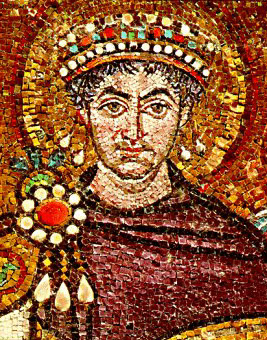 The third period lasted from 507 to 711, until the conquest of the Moors in 711, which effectively ended the reign of the Visigoths, and includes the loss of parts of southern Spain to the Byzantines, the Eastern half of the Roman Empire (including Cartagena).
The third period lasted from 507 to 711, until the conquest of the Moors in 711, which effectively ended the reign of the Visigoths, and includes the loss of parts of southern Spain to the Byzantines, the Eastern half of the Roman Empire (including Cartagena).
This period was characterised by destructive power struggles within the Visigoth aristocracy and within the Visigoth kingdom of Toledo, which made it possible for the Byzantine province of Spania to become established within the kingdom during the 6th century. In 552 the Visigoth nobleman Athanagildo requested military aid from the Byzantine Empire, who were trying to recover the former Roman territories and whose armies were retaking large areas of Spain and Africa, to topple King Agila I, offering territory within the Iberian Peninsula in return. Emperor Justinian sent an expeditionary force to strengthen Athanagild’s troops, and when the king’s supporters were defeated by the rebels at Sevilla this lead to him being assassinated by his own supporters and being supplanted by Athanagild, and the Byzantines got the land they wanted, including Cartagena and Begastri.
The province of Spania was founded by the Byzantines in 555 with the aim of re-establishing the Western Roman Empire, and included the coast from Carthago Nova (Cartagena) to Malaca (Málaga), the Balearic Isles and the inland area between Astigi (Écija) and Basti (Baza).
The province was ruled by a “magister militum Spaniae”, a civil and military governor who was appointed by the Emperor of Byzantium. When the Visigoths lost Carthago Nova this brought about the capital of the Carthaginensis province being moved to Toletum (Toledo).
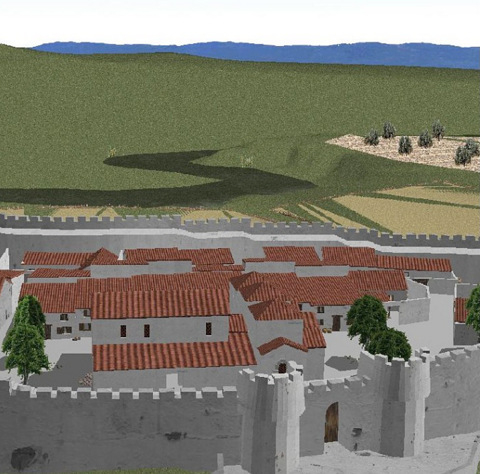 Meanwhile, the Byzantines made Carthago Nova their Episcopal seat and the capital of the province of Spania, re-naming it Carthago Spartaria and undertaking a total reconstruction of the city. Carthago Spartaria was to remain the Episcopal seat throughout the Byzantine rule.
Meanwhile, the Byzantines made Carthago Nova their Episcopal seat and the capital of the province of Spania, re-naming it Carthago Spartaria and undertaking a total reconstruction of the city. Carthago Spartaria was to remain the Episcopal seat throughout the Byzantine rule.
The Visigoths, however, saw the province of Spania as a threat to their dominance in the peninsula, and in the second half of the 6th century King Leovigildo attacked the Byzantines in the inland areas. King Sisebuto then took Malaca and Carthago Spartaria from them at the start of the 7th century, destroying the city of Carthago Spartaria: ie destroying what is now Cartagena yet again. The Byzantines were finally expelled from Hispania by King Suintilla in the year 622.
Begastri again reverted to Visigoth control.
Decline of the Visigoths and war with the Moors
 The struggle among the different noble clans to take over the Crown of the Visigoth kingdom of Toledo eventually brought about the fall of the kingdom, and the Islamic invasion of Hispania during the early 8th century.
The struggle among the different noble clans to take over the Crown of the Visigoth kingdom of Toledo eventually brought about the fall of the kingdom, and the Islamic invasion of Hispania during the early 8th century.
This came about when King Witiza named his son Agila as heir to the throne, bucking the Visigoth tradition of an elected monarch. When Witiza died in the year 710, the leading noblemen chose Don Rodrigo, the duke of the Bética province, as the new king of Hispania, and the supporters of Agila hatched a plot to overthrow him. This they achieved thanks to the military aid supplied by the Moors through Count Julián of Ceuta. In return for their support the Moors received the booty captured in the struggle, but this then lead to the Moorish invasion of Spain.
The armed conflict began when Musa, the Moslem governor of northern Africa, ordered his troops to cross the Straits of Gibraltar, and General Tarik landed at Gebel Tarik (Gibraltar) before advancing into the south of the peninsula. Don Rodrigo came to meet the invaders from Vasconia, but the Moors defeated the Visigoth army at the battle of Guadalete on 19th July 711, slaughtering the King and most of the Visigoth nobility. The Moorish victory not only cost Don Rodrigo his life, but also marked the end of the Visigoth kingdom of Toledo: Islamic troops quickly completed their conquest of Visigoth Hispania, facing little opposition in their march to the Cantabrian coast and the foothills of the Pyrenees.
There was some Visigoth resistance in the south-east, though, led by Duke Teodomiro, the governor of the province of Aurariola (Orihuela), which included the modern-day provinces of Alicante, Albacete, Murcia and the northern part of Almería. Eventually, in 713, Teodomiro saw that he could no longer repel the Moors’ advance and found himself obliged to sign a peace treaty with Abd Al-Aziz, the chief of the Moorish army in the Eastern coastal region.
The terms of this treaty, known as the Pact of Teodomiro, ( pact of Tudmir) recognized Islamic sovereignty in Hispania, and handed over to the Moors the territories of Aurariola (Orihuela), Leucante/Lucentum (Alicante), Balantala (Villena or Valencia), Mula, Eliocroca (Lorca), Begastri (Cehegín) and Eio (Hellín or Elche), as well as establishing the payment of tributes in return for peace and religious freedom. By the same treaty Teodomiro was granted political autonomy in his government of the region, which was known as the kingdom of Tudmir, and remained in power throughout his lifetime, being succeeded by his son.
However, by the beginning of the 9th century power had reverted to Moorish control and Begastri was abandoned in favour of constructing a new town in the location of the existing Cehegín.
Begastri and the Visigoths
 So, taking all the above into account, we can more clearly see how the infrastructure which exists in Begastri was part of the Visigoth kingdom.
So, taking all the above into account, we can more clearly see how the infrastructure which exists in Begastri was part of the Visigoth kingdom.
When the Roman Empire started to fall apart the population of Begastri destroyed the monumental buildings of the town and used them to construct a walled fortifications which gave the first line of defence. At some point Begastri was occupied by the invading goths who took advantage of its strategic location and existing fortifications, although there is no documentary evidence to indicate whether the town was occupied by the Alani tribe to whom the area belonged, or attacked by the vandals who stormed Cartagena in 425 A.D.
The Visigoths started to really take control of this area during the last quarter of the fifth century, and its likely that their continued occupation of Begastri began around this time. The town of Begastri was included within the old Roman province of Cartaginensis, which had Cartagena as its administrative capital, although the city had been virtually destroyed by the vandals in 425, so it is likely that Begastri would have been an important Visigoth settlement at this point.
This era was characterised by power struggles between the ruling classes and competing clans, struggles, which resulted in much of what had been the Cartaginensis province handed to the Byzantines following a succession coup in which the Byzantine armies were invited to participate. (see above.)
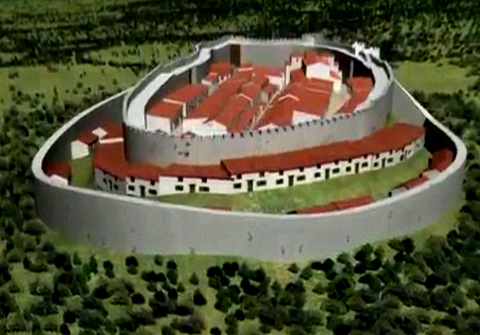 Begastri found itself under Byzantine occupation, but in an area close to the border with Visigoth territories. Although initially relations were cordial, the relationship soon deteriorated and the Visigoths set out to regain the territories they had lost, Begastri, close to the border, a natural target.
Begastri found itself under Byzantine occupation, but in an area close to the border with Visigoth territories. Although initially relations were cordial, the relationship soon deteriorated and the Visigoths set out to regain the territories they had lost, Begastri, close to the border, a natural target.
A second external wall was created, giving a second layer of defence for the population, most likely by the Byzantines during this period. The internal wall was also further fortified, the original Roman entrance walled up and extra towers constructed in front of the reduced scale entrance to give it greater security.These alterations can clearly be seen in the stone used in the construction of the walls.
By 622 the Byzantines were defeated and expelled, Begastri returning once again to Visigoth control, although peace was elusive due to the constant altercations between the nobility. Following the expulsion of the Byzantines, Cartagena was once again razed to the ground and the Visigoths transferred their central administration to Orihuela.
Begastri became the Episcopal seat and a basilica dedicated to San Vicente was constructed inside the inner walled area of Begastri, converting Begastri into an important town.
However , in the year 688AD everything changed, and Begastri lost its influence and its Episcopal seat. The transfer of power left the town in a state of decline and the subsequent militarisation of the government led to a slow abandonment of the settlement. In the year 711, the Moors invaded and the population of Begastri was dispersed.
The town was abandoned and slowly crumbled, good stone removed to be used in the construction of the new Moorish town of Cehegín.
Visigoth religion and Begastri as an Episcopal seat
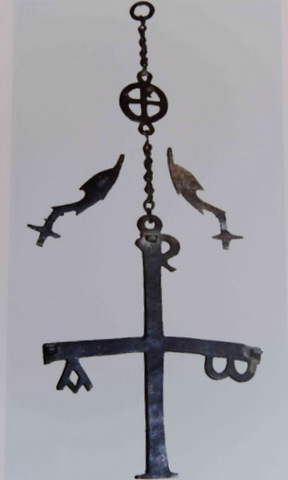 The inhabitants of Begastri before the invasion of the Visigoths would have been predominantly Catholic Christians. The spread of Christianity throughout the Roman Empire had been legitimised in A.D. 313 when the emperor Constantine made Christianity legal, and then, in A.D. 391 worship of other Gods was made illegal.
The inhabitants of Begastri before the invasion of the Visigoths would have been predominantly Catholic Christians. The spread of Christianity throughout the Roman Empire had been legitimised in A.D. 313 when the emperor Constantine made Christianity legal, and then, in A.D. 391 worship of other Gods was made illegal.
The invading Visigoths were Christian, but they were not Catholic, the Visigoths favouring what is called Arianism. Arianism had its roots in teachings attributed to a preacher called Arius, active between AD250 and and 336. He questioned the concept of the Holy Trinity, saying that the son of God did not always exist, but was created by God, so is therefore distinct from God the Father, so the Holy Trinity cannot be one .
This fundamental difference between Catholicism and Arianism led to a gulf between the Visigoths and the incumbent Catholic population until 589 when they converted to Catholic orthodoxy at the 3rd Council of Toledo under the rule of King Recaredo.
This marked the beginning of a new period in the history of Visigoth Hispania, when the Church actively collaborated with the monarchy through the ecumenical councils. The most important bishops in Hispania took part in these councils, including the bishop of Begastri. The councils could be called almost exclusively by the King, and during the Visigoth monarchy there were sixteen of them. Over time they became an important source of ecclesiastical law, and many debates took place concerning liturgical and disciplinary issues as well as pastoral practice. The canons of one council were summarized at the next, until a wide collection of canons was accumulated, documentary evidence of the function of Begastri, some of which still survive today.
The Bishops of Begastri signed the canons of all the Councils of Toledo during the 7th century.
One of the most important symbols of the religious importance of Begastri is a bronze cross discovered whilst a railway line was being constructed next to the location of the town. This cross is now in the Municipal Archaeological Museum. For more information Click Cross of Begastri.
Cartagena
El Carmoli
Islas Menores and Mar de Cristal
La Manga Club
La Manga del Mar Menor
La Puebla
La Torre Golf Resort
La Union
Los Alcazares
Los Belones
Los Nietos
Los Urrutias
Mar Menor Golf Resort
Pilar de la Horadada
Playa Honda / Playa Paraiso
Portman
Roldan and Lo Ferro
San Javier
San Pedro del Pinatar
Santa Rosalia Lake and Life resort
Terrazas de la Torre Golf Resort
Torre Pacheco
Aledo
Alhama de Murcia
Bolnuevo
Camposol
Condado de Alhama
Fuente Alamo
Hacienda del Alamo Golf Resort
Lorca
Mazarron
Puerto de Mazarron
Puerto Lumbreras
Sierra Espuna
Totana
Abaran
Alcantarilla
Archena
Blanca
Corvera
El Valle Golf Resort
Hacienda Riquelme Golf Resort
Lorqui
Molina de Segura
Mosa Trajectum
Murcia City
Peraleja Golf Resort
Ricote
Sucina
Condado de Alhama
El Valle Golf Resort
Hacienda del Alamo Golf Resort
Hacienda Riquelme Golf Resort
Islas Menores and Mar de Cristal
La Manga Club
La Torre Golf Resort
Mar Menor Golf Resort
Mazarron Country Club
Mosa Trajectum
Peraleja Golf Resort
Santa Rosalia Lake and Life resort
Terrazas de la Torre Golf Resort
La Zenia
Lomas de Cabo Roig

CAMPOSOL TODAY Whats OnCartagena SpainCoronavirusCorvera Airport MurciaMurcia Gota Fria 2019Murcia property news generic threadWeekly Bulletin



